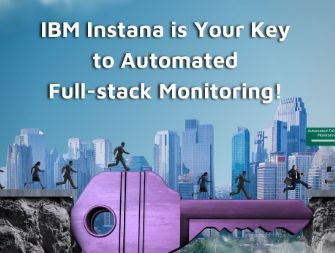August 2025 – Cupertino, CA
For decades, computing power has been measured in clock speeds, core counts, and graphics performance. But in 2025, a new factor is rewriting the specs sheet: artificial intelligence acceleration. From consumer laptops to enterprise-grade workstations, AI-focused hardware is changing not just how fast we compute — but what our machines can do.
The Evolution of Raw Power
The traditional race for computing dominance has always been about faster CPUs and beefier GPUs. Intel, AMD, NVIDIA, and Apple have pushed transistor sizes smaller, clock speeds higher, and thermal efficiencies better. But this year, that story has a new protagonist: the neural processing unit (NPU).
NPUs are specialized chips designed to handle AI and machine learning workloads locally, rather than relying solely on the cloud. This shift is giving devices unprecedented capabilities in speech recognition, image processing, natural language tasks, and predictive analytics — all without sending sensitive data over the internet.
AI PCs and Laptops Go Mainstream
According to IDC’s 2025 PC Market Outlook, AI-enabled PCs will account for 65% of all premium laptop sales by the end of 2026 (IDC, 2025). What defines an “AI PC”?
-
On-device AI acceleration via NPUs or dedicated AI cores.
-
Optimized operating systems like Windows 11 AI Edition, which integrates AI-assisted search, content creation, and task automation.
-
Adaptive performance tuning that learns from your usage patterns to extend battery life and optimize thermal performance.
Apple’s latest M4 Pro and M4 Max chips feature enhanced AI acceleration, enabling real-time video editing effects, natural-sounding transcription, and live translation — all without a network connection. On the Windows side, Microsoft and Qualcomm’s Snapdragon X Elite platform is delivering similar on-device AI experiences for ultraportable laptops.
Why On-Device AI Matters
While cloud AI is powerful, it comes with latency, privacy, and bandwidth limitations. On-device AI:
-
Reduces latency — responses are instant, even without internet.
-
Enhances privacy — sensitive data like medical images or meeting transcripts never leave your device.
-
Saves bandwidth — no need to stream huge datasets to and from cloud servers.
For enterprise users, this means tasks like financial model simulations, engineering design previews, and large dataset visualizations can be performed on a single laptop instead of relying on expensive remote compute clusters.
High-Performance Laptops for Power Users
In 2025, the line between laptops and desktops is blurring for professionals. The latest mobile workstations pack:
-
Up to 96GB of unified memory for massive AI model training on the go.
-
NVIDIA RTX 5000 Ada GPUs optimized for both 3D rendering and AI workloads.
-
High-refresh OLED displays for color-critical design and media work.
Dell’s Precision AI Series, HP’s ZBook AI Studio, and Lenovo’s ThinkPad AI Extreme are targeting creators, engineers, and data scientists who need mobility without sacrificing raw performance.
The Consumer Market: AI for Everyone
It’s not just enterprise users benefitting from AI computing power:
-
Students get real-time transcription, study summarization, and language translation built into their laptops.
-
Gamers see AI-enhanced graphics, like NVIDIA DLSS 4, which uses machine learning to upscale visuals with minimal performance cost.
-
Everyday users enjoy smarter photo editing, meeting summaries, and predictive typing — baked directly into their operating systems.
Impact on Energy Efficiency
Ironically, more computing power doesn’t necessarily mean more energy consumption. AI acceleration chips are purpose-built for efficiency, often using far less power than running the same tasks on general-purpose CPUs or GPUs.
For laptops, this translates to battery gains of up to 30% when using AI-enhanced workflows, according to a 2025 test by PCMag (PCMag, 2025).
Challenges Ahead
The AI PC boom isn’t without hurdles:
-
Software Optimization Gap: Not all applications fully leverage AI hardware yet.
-
Cost: Premium AI-enabled laptops carry a 20–30% price premium.
-
Compatibility: AI features may be platform-locked (e.g., Windows Copilot+ only on specific chipsets).
What’s Next for 2026
We expect:
-
Unified AI ecosystems where AI models run seamlessly across desktop, laptop, mobile, and cloud.
-
Customizable AI assistants trained on your personal or company data, running entirely on-device.
-
Portable AI dev kits for developers to build and train niche models without dedicated cloud infrastructure.
By 2026, “computing power” won’t just mean raw speed — it will mean intelligent speed, where devices anticipate needs, adapt to workloads, and work alongside the user as a true digital partner.
Closing Thought
The age of AI-enhanced computing is here. Whether you’re rendering complex 3D environments, running predictive analytics, or simply drafting a proposal, the next generation of PCs and laptops will not just process your work — they’ll help think it through. In the race for computing power, intelligence is the new horsepower.
References (APA Style)
-
IDC. (2025). PC Market Outlook 2025. Retrieved from https://www.idc.com
-
PCMag. (2025). AI Laptop Battery Performance Test 2025. Retrieved from https://www.pcmag.com
-
Microsoft. (2025). Windows AI Edition Overview. Retrieved from https://www.microsoft.com
-
Apple. (2025). M4 Chip Technical Specifications. Retrieved from https://www.apple.com
Post Disclaimer
The information provided in our posts or blogs are for educational and informative purposes only. We do not guarantee the accuracy, completeness or suitability of the information. We do not provide financial or investment advice. Readers should always seek professional advice before making any financial or investment decisions based on the information provided in our content. We will not be held responsible for any losses, damages or consequences that may arise from relying on the information provided in our content.



